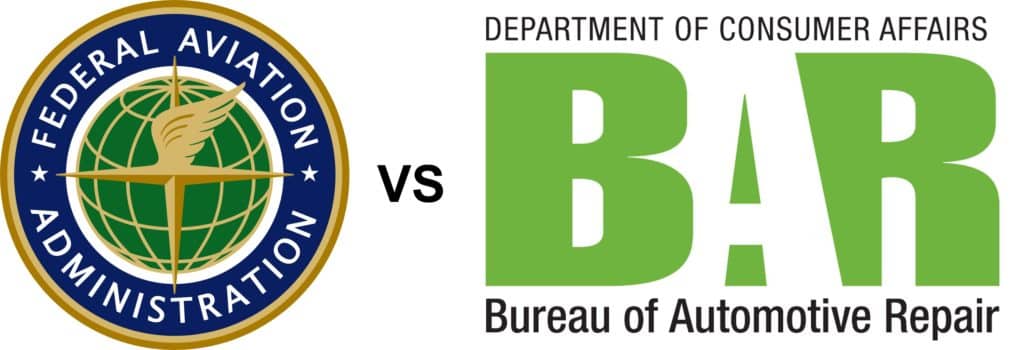Why is GA maintenance done on a T&M basis, which places all the risk on the aircraft owner and none on the shop?

A successful surgeon put his Beechcraft Baron 58 in an Arkansas shop for a makeover. He wanted both engines overhauled, new paint and interior, and the steam gauges replaced with a modern glass panel. The shop estimated they could get all this done in about six months at a cost of about $200,000. Much to the doctor’s dismay, the work actually took two years the final bill was about $500,000..
I learned about this when a mutual friend called me to ask if there was anything I could do for the Baron owner, who was extremely upset and understandably feeling seriously ripped off. I told my friend that while I certainly felt the owner’s pain, there was really nothing I or anyone else could do to help. Like the vast majority of GA maintenance, the work was done on a time-and-materials (T&M) basis. This meant that the owner agreed to pay for all the labor expended by the shop and its subcontractors (e.g., the paint shop) on an hourly basis, and for any required parts (typically at list price).
The original $200,000 quote was only an estimate, not a commitment. The fact that the owner had already paid the shop some $400,000 in progress payments made it clear that he knew the job was going way over the original estimate. Now he was starting at a $500,000 final invoice and suffering from a serious case of buyer’s remorse—and who could bame him?
Dealt a Bad Hand

In a situation like this, the shop holds all the aces and the owner has no leverage. Because the work was done on a T&M basis, the owner is obligated to pay the shop for whatever labor was actually expended and whatever parts were actually installed. The shop is unlikely to release the airplane to the owner until its invoice is paid in full. If the owner balks at paying it, the shop can go to court and obtain a “mechanic’s lien” against the airplane, allowing it to legally hold the airplane hostage until the bill is paid. If the owner still refuses to pay, the shop could conceivably auction off the airplane to satisfythe owner’s indebtedness. (The laws concerning mechanic’s liens vary somewhat from state to state.)
Of course, the owner could have directed the shop to stop work at any point once it became apparent that the job was going to significantly exceed the original estimate. But he didin’t. In this case, giving a stop-work order might have been difficult, considering that for much of the time the engines were at the overhaul shop and the airframe was at the paint shop.
Think this poor Baron owner’s plight is unusual? Think again. The mutual friend who contacted me on behald of the Baron owner had a similar experience involving his own airplane a few years ago. My friend—who is an A&P/IA and well-known maintenance expert—took his Bonanza to a top-notch paint shop in the Great Lakes area. The paint shop quoted him $20,000 to paint the airplane. The final bill was $50,000. Like the Baron owner, my Bonanza-owner friend felt seriously ripped off, but realized he had no choice but to pay the paint shop’s bill if he wanted to get his airplane back.
Both of these cases involve shops whose final invoices were 250% of what their customers expected to pay. That’s admittedly toward the high end of the scale. But GA maintenance tasks that come in at 150% or 200% of estimate are almost routine. The result is invariably hard feelings by the owner toward the shop, and sometimes a decision by the owner to sell the airplane and leave the GA ownership ranks altogether.
A Better Way to Play

The T&M method of charging for aircraft maintenance is great for shops but not so great for aircraft owners. T&M puts shops in the driver’s seat and aircraft owners at a serious disadvantage. It gives shops no incentive to keep costs reasonable, and it puts 100% of the risk of cost overruns on the aircraft owner who usually is not in a good position to control that risk.
Does it really have to be this way? It sure isn’t in the automotive world.
.When you take your car in for service, virtually every maintenance task is priced on a flat-rate basis. Whether you need a tune-up, a brake job, wheel alignment, balancing, lubrication, oil change, spark plugs, or a window regulator, there’s a specific well-defined posted price for that.
Does this mean that every brake job or tune-up requires exactly the same amount of labor? Of course not. What it means is that the variation in labor hours between one vehicle and another is absorbed by the shop, not by the motorist. The shop will probably take a bath on certain vehicles and make out like a bandit on other vehicles. That’s okay. What really matters is that when all those bath-jobs and bandit-jobs are totalled up at the end of the year, the shop has operated profitably in the aggregate.
Flat-rating also gives the shop a powerful financial incentive to work efficiently. Doing so will minimize the number of bath-jobs and maximize the number of bandit-jobs, thus maximizing the shop’s year-end profit. Which seems like a good thing.
For the motorist customers, flat-rating means no unpleasant surprises at invoice time. It also gives the customers the ability to compare prices between competing shops in a meaningful way. Those are good things, too.
Most shop owners I’ve discussed this with tell me that flat-rate pricing could never work in GA maintenance because “there are just too many variables and unknowns” or words to that effect. Sorry, I just don’t buy that.
When I founded my company Savvy Aviation 15 years ago, one of my most basic principles was that we would charge our clients a fixed annual fee for what would be a highly variable and unpredictable amount of work. We absolutely do take a bath every year on some of our neediest clients—ones who have a costly mishap or an extraordinary large number of discrepancies at the annual inspection—and that’s okay because we’re profitable on our other clients that don’t turn out to be so needy. As CEO, all I care about is that the company makes a decent profit in the aggregate, which has always been the case during the 15 years we’ve been in business.
Flat-rate pricing works for the automotive maintenance industry and it works for Savvy. I’m convinced that it could work for most aspects of GA maintenance, too. Of course, GA shops are not too excited about this concept because it shifts the risk from the owners to the shops. But it seems to me that this is where the risk belongs, because shops are far better equipped to control and mitigate that risk than owners are.
Savvy didn’t need to adopt a flat-rate pricing model. We could have charged for our services by the hour the way almost everyone else in this industry does. In fact, hardly a day passes when I’m not approached by an aircraft owner for help with an offer “to pay you for your time.” (I always politely decline such offers.) When I founded Savvy, I firmly believed that flat-rate pricing was a better way. Fifteen years later, I still do.
The Role of Regulation
Both aircraft and automotive maintenance shops are subject to government regulation, but they are regulated in entirely different ways.

The FAA regulates aviation shops and mechanics to ensure that they use approved parts, methods, techniques and practices and that make their airworthiness determinations and do their paperwork in accordance with the FARs. However, the FAA totally abstains when it comes to a maintainer’s business practices. If la shop tells you they’ll do some job for $X and then present you with an invoice for $2X or $3X, don’t expect any help from the Friendlies. Not only are business practices outside the scope of the FAA’s jurisdiction, but an FAA employee could get fired for getting involved in any sort of business dispute between an aircraft owner and a maintenance shop or mechanic.
In contrast, automotive maintenance shops are regulated by the state. Virtually every state in the US has laws that regulate how automotive repair shops do business and an agency responsible for enforcing those laws and dealing with customer complaints. California’s Automotive Repair Act is enforced by the California Bureau of Automotive Repair. The Florida Motor Vehicle Repair Act is enforced by an office of the Florida Department of Agriculture & Consumer Services. Wherever you live, your state has comparable laws and a comparable enforcement agency. Google it if you’re curious.
In most states, an automotive repair shop is not allowed to work on your vehicle unless they first provide you with a work order detailing the work to be performed and the cost of that work, and obtain your signature approving that work and those costs. Furthermore, if the shop subsequently determines that additional work beyond the scope of what you approved is needed that will increase the cost above what you originally agreed to, the shop is required to contact you, describe the additional work and cost, and obtain your explicit permission to proceed (which in most states may be given orally). In the event the repair shop fails to do all this, you can file a complaint with the state’s bureau of automotive repair (or equivalent) and they’ll ensure the shop does right by you (or risk losing their business license if they don’t).
Though virtually every state has such laws and enforcement agencies to protect motorists, I’m unaware of any state that has an Aircraft Repair Act or a Bureau of Aircraft Repair. Why not? Probably because virtually all state legislators are motorists but precious few are aircraft owners.
Survival in the Wild West
Let’s get real. GA maintenance shops aren’t going to switch from T&M to flat-rate pricing anytime soon. Nor are any states likely to enact an Aircraft Repair Act or create a Bureau of Aviation Repair. So, aircraft owners need to accept that the world of GA maintenance is largely devoid of rules or oversight when it comes to pricing and business practices. You won’t know what your maintenance is actually going to cost until you get the final invoice. By that time, it’s too late for you to influence the outcome. Your plane will probably remain incarcerated until you pay the shop’s bill. If ven if you consider that bill unreasonable or unfair, you probably have no legal recourse. It’s the Wild West.

To survive in this Wild West, you better come packing. You need to impose the same rules on your shop and mechanics that the Bureau of Aircraft Repair would impose if it existed. You need to make sure that your shop and mechanics play by those rules. Those rules are simple, and should be familiar to anyone who has ever taken his car to a shop for repairs:
RULE #1: The shop may not perform any work or order any parts without your explicit written approval.
RULE #2: The shop must provide you with a detailed written cost estimate for labor, parts, and outside work before you will approve work or parts.
RULE #3: The shop may not exceed any of its estimates without stopping work, providing you with a revised estimate and the reason for the change, and obtained your explicit written approval to proceed.
A handful of the most professional shops we work with will follow those rules even without being asked to do so, simply because it’s the right and honorable thing to do. However, most shops won’t adhere to this protocol unless you require them to do so and keep them on a short leash. Any shop that is unwilling to follow these commonsense rules is one you simply shouldn’t do business with.
The protocol I’ve described here is exactly what my company Savvy does for its managed maintenance clients. Most shops will cooperate with this protocol (sometimes reluctantly). A handful of shops simply won’t play ball by these rules, and we don’t use them.
Unfortunately, in my experience, most aircraft owners are uncomfortable imposing these rules on their shops and mechanics, or declining work that the shop recommends but the owner considers unnecessary and too costly. But trust me, it’s what you need to do if you’re going to survive in the Wild West.
Maintenance Clubs
Lately, prompted by GA’s acute mechanic shortage, I’ve been thinking about what might just be a viable alternative to the current T&M system. This concept might not be suitable for every aircraft owner, but could be very attractive to many of us.

Imagine a group of 20 GA aircraft owners based at the same airport forming a maintenance club. The club hires two experienced A&P/IA mechanics to work exclusively on club members’ airplanes, and pays each of them a salary of, say, $130,000 per year—roughly 50% more than they could make working at a conventional shop. The club secures a hangar and equips it with the basic equipment and furnishings (air compressor, wing jacks, shelving, etc.).
Each club member pays a fixed monthly membership fee—say $1,200/month—sufficient to cover the mechanics’ salaries, the hangar rent, and any club administrative and overhead expenses. Perhaps members who own more complex, maintenance-intensive airplanes might pay a bit more, and those who own simpler planes a bit less. The club’s board of directors would establish a fee structure that’s fair for everyone. Each member is reasponsible for the cost of any necessary parts, but would not pay any hourly fees for labor.
Club membership would cover the labor cost for most scheduled and unscheduled maintenance, including the annual inspection and associated repairs. However, major outside work such as engine overhaul or avionics refit would not be covered, although the club might be able to negotiate favorable rates such things.
It seems to me such a maintenance could offer owners much more control over their maintenance, far more predictable maintenance costs, and quicker response when squawks arise and unscheduled maintenance is needed. It would be a great deal for the club’s mechanics, too. Sounds like a win-win to me. Any takers?
You bought a plane to fly it, not stress over maintenance.
At Savvy Aviation, we believe you shouldn’t have to navigate the complexities of aircraft maintenance alone. And you definitely shouldn’t be surprised when your shop’s invoice arrives.
Savvy Aviation isn’t a maintenance shop – we empower you with the knowledge and expert consultation you need to be in control of your own maintenance events – so your shop takes directives (not gives them). Whatever your maintenance needs, Savvy has a perfect plan for you: